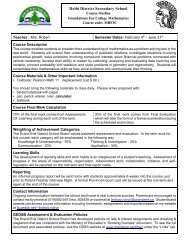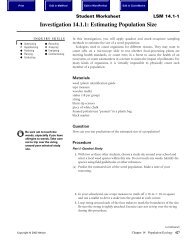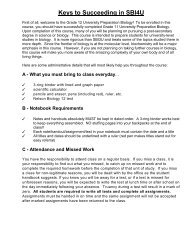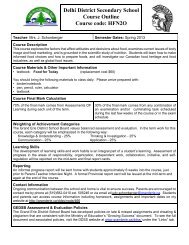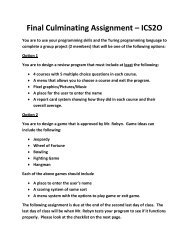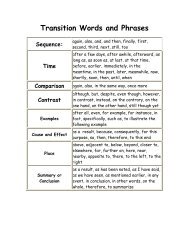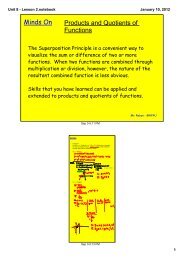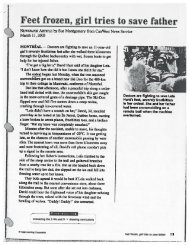Chapter 11.pdf
Chapter 11.pdf
Chapter 11.pdf
- No tags were found...
Create successful ePaper yourself
Turn your PDF publications into a flip-book with our unique Google optimized e-Paper software.
Concave MirrorsA concave mirror, also called a converging mirror, has a surface thatcurves inward like a bowl (Figure 11.10). The image formed by aconcave mirror depends on how far the object is from the focal point ofthe mirror. If the object is far away from the focal point, the reflectedrays form an inverted image as shown in Table 11.1. The closer theobject gets to the focal point, the larger the image becomes. If the objectis between the focal point and the mirror, like the bird in Figure 11.11,the image becomes upright and enlarged. When the object is exactly atthe focal point, all rays that leave the object reverse direction at themirror and are reflected away from the mirror parallel to each other. Inthis case, no image is formed.FimageFigure 11.10 Parallel light rays approaching a concave mirror.Figure 11.11 A virtual image produced by a converging mirror.The bird is between the focal point and the mirror so the virtualimage is larger than the real bird.Table 11.1 Ray Diagrams for Concave MirrorsDistance of Objectfrom Mirror, d oType of ImageFormedHow the ImageIs ViewedRay DiagramObject is more thantwo focal lengths.Smaller than object,inverted, realThe mirror can projectan image on a screenplaced in front of themirror.objectFObject is between oneand two focal lengths.Larger than object,inverted, realThe mirror can projectan image on a screenplaced in front of themirror.objectFObject is at focal point. No image is formed. No image is formed. objectFObject is betweenmirror and focal point.Larger than object,upright, virtualViewer looks into themirror to see theimage.FobjectRay diagrams model the behaviour of light in mirrors and lenses.421



